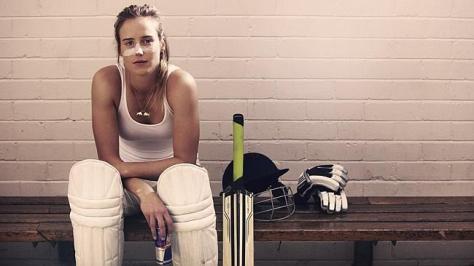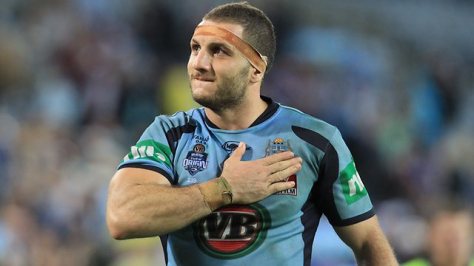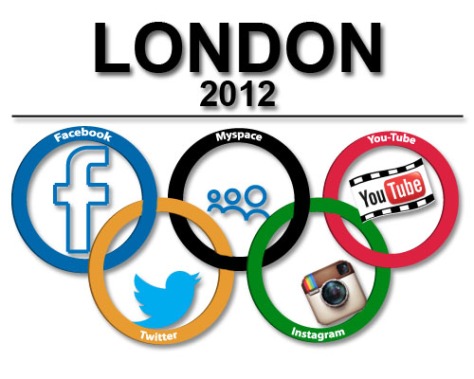Perhaps you’ve imagined yourself scoring a century on Boxing Day at the MCG, or kicking the winning goal in an AFL Grand Final. Maybe you’ve thought about what it would be like to win an Olympic gold medal, or a grand slam tennis or major golf tournament. Or maybe you’ve pictured yourself looking down at a sea of people in Pit Straight after taking out a Bathurst 1000.
While all of these scenarios maybe extraordinary experiences for those few fortunate and talented enough to be involved (and well worthy of the odd day dream or two for the rest of us), have you ever seriously considered how it must feel to be a professional sportsperson at a time when social media has become such an easily accessible and powerful platform.
Whereas in years past the only connections between athlete and supporter was on game day itself, or the mostly one way conduit controlled by traditional media, now Facebook, Twitter and a forever growing list of other social media platforms allow fans and critics alike to voice their opinions to any given athlete, and the world in seconds.
The behavior of crowds on game day has in the most part improved dramatically over the years. Due not only to real penalties for unacceptable behavior, but also the growing intolerance of it by the vast majority of attending fans.
However there are no such restrictions on social media. As unsavoury incidents towards players has lessened considerably on game day, professional sportspeople have become increasingly subjected to harassment and abuse online.
The attacks on athletes via social media are often not even instigated by any actions on the field, but rather because of their race, gender, religion, ethnicity or a multitude of any other perceived faults in their makeup.
Sportswomen in particular are targeted by the most insidious vitriol imaginable. Threats of rape, derogatory comments on their looks, and promises of all manner of sadistic scenarios are common place for sportswomen who have a presence on social media.

In September this year, Britain’s most successful gymnast (male or female), Beth Tweddle took part in a Twitter Q&A for Sky Sports News. The amount of abuse and derogatory comments directed at her was staggering.
Tweddle ended up only answering a handful out of hundreds of questions, as the vast majority had nothing to do with her sporting achievements, but instead concentrated almost entirely on her looks – or perceived lack thereof, gender, and sexuality.
In 2014 arguably Australia’s greatest sportswoman – Ellyse Perry, attracted a surge in the number of outrageous and deplorable comments usually directed at her after a meme was published on a particular website.
Some were as puerile as, ‘why aren’t you in the kitchen?’ However far too many were made up of overly descriptive accounts of what sexual perversity said commenter wished to perform on Perry.
In Australia, indigenous athletes are also often targeted. Adam Goodes took time out of the game this year after weeks of not only constant booing during games from a minority who refused to ‘give up their right to do so’, but a torrent of abuse on social media.
In 2013 an escalation in racial attacks on Greg Inglis prompted a response by Mal Meninga in the Sunday Mail, while last year both Ben Barba and Nic Natinui – who is of Fijian descent, made headlines for similar racial abuse online.
Even more deplorable is the sadistic joy some get out of others’ personal tragedies. In 2012 NSW Origin Skipper Robbie Farrah was subjected to some particularly vile commentary after his mother passed away, as was Swans co-Captain Jarryd McVeigh after the loss of his daughter Luella the previous year.

To think that an athlete of any race or gender cannot be affected by such consistently hateful, explicit or derogatory vitriol is naïve at best.
Director of Insight Elite Performance Psychology Grant Brecht has been the Sydney Swan’s sports psychologist for over 16 years, and says athletes of all ages, but especially those younger and less experienced can be tipped over the edge when attacked on social media.
“Elite athletes can be under enormous stress competing day after day at a very high level, and the resulting stresses and emotional ‘hits’ from social media posts can be too much for some,” Brecht explains.
“Much also depends on the personality characteristics of the athlete in question. While some can cope with the attacks, others are less equipped to deal with the emotional ‘hit’ they take when social media posts are particularly vindictive and cruel.
“Quite a few athletes suffer from their own quite severe mental health concerns such as depression and anxiety, and the negativity of some of the social media postings can heighten the feelings of distress and uncertainty felt by these athletes.”
Although Brecht says younger athletes are more prone to being affected by social media attacks, he points out that only this year we have seen the effects that a mob mentality can have on even very seasoned players when targeted on social media.
He also points out that even for those athletes who appear to handle any abuse aimed at them on social media, like all of us they have people close to them who are perhaps not able to cope as well with watching a loved one being constantly attacked.
“Family and friends often get caught up in trying to assist the athlete to cope with social media attacks. However they themselves can often fall victim to their own heightened anxiety and anger over the unfairness of it all.”
In the United States last year NFL running back Rashard Mendenhall walked away from football aged only 26, later citing in an article he wrote for The Huffington Post, the constant hatred directed at him on social media as one of the reasons why.
“There is a bold coarseness you receive from non-supporters that seems to only exist on the Internet. However, even if you try to avoid these things completely — because I’ve tried — somehow they still reach you. If not first-hand, then through friends and loved ones who take to heart all that they read and hear.”
Some in the US would suggest that in Mendenhall’s case the abuse was justified. Like many other professional sportspeople have done in the past, and will no doubt continue to do so in the future, Mendenhall made some controversial comments on a sensitive subject that in hindsight he wishes he had never posted.
The problem is though, that for every instance where the athlete can at least lay claim to some of the blame for being attacked on social media, there are so many more where he or she has done nothing wrong, except exist and/or be successful in their chosen field.
Last week at Collingwood’s preseason camp in Falls Creek, Adam Treloar was asked directly by the media why he chose to sign with the Magpies, rather than the other main suitor for his services in Richmond.
“A lot of people might think I’m silly because Richmond have a lot of good players, but I think Collingwood have a better list, a younger list, who in a couple of years’ time can hopefully win a premiership,” he responded.
Treloar’s answer caused a storm on social media, subsequently becoming the basis of numerous media articles, including analytical breakdowns of the two teams involved to prove whether his ‘opinion’ was factually correct.
Yet what did Treloar say that was so wrong? If directly asked, any player in his position is going to say the club he signed with is – in his own opinion – more capable of success, whoever that club maybe.
That such a comment drew so much attention, and attracted such a response in the first place is ridiculous. That it then became the basis of so much coverage in traditional media is even more so, and further evidence of how powerful a platform social media has become.

The 2012 London Olympics attracted 100 billion posts on Facebook, 5 billion tweets on Twitter, while 650,000 photos were shared on Instagram.
In his Huffington Post article Rashard Mendenhall also wrote. ”I’m not a terribly sensitive person, so this stuff never really bothered me. That was until I realized that it actually had an impact on my career.”
“Over my career, I would learn that everything people say behind these computers and smartphones actually shape the perception of you — the brand, the athlete and the person.”
For many sportsmen and women, like Mendenhall, social media has been somewhat of a curse – for them personally and their ‘brand’, but for others it has provided rewards unfathomable in the not too distant past.
It is no coincidence that the worlds’ highest paid athletes are also major forces on social media, and therein lies a major reason why professional sportspeople are so drawn to it. The more followers an athlete has, the more marketable he or she is.
Christiano Renaldo is arguably the most recognisable sportsman on the planet – and one of the highest paid. With a Twitter following of 38.9 million, and almost 108 million likes on Facebook it is easy to see why.
Even athletes of limited ability can make themselves more marketable through social media. Surfer Alana Blanchard, who has never won a tour event, and was even cut from the tour in 2014 has 1.4 million followers on Instagram. Which is more than any other professional surfer, including 11-time World Champion Kelly Slater.
As powerful as it is, social media is a still only a tool, and like any tool it can be used in a positive or negative way. Unfortunately its use requires no training, little skill and even less intelligence, and the only moral limitations on how we use it are those we impose upon ourselves.
Although most of us will never have the chance to score a length of the field try in extra time to win an NRL Grand Final, or shoot the winning goal in a netball World Cup, we do have one thing in common with all professional athletes – just like them we are all people with families and friends.
An abridged version of this article published in Huffington Post



